Launched in early 2019, the International Team for Implantology (ITI) Curriculum takes a carefully considered and systematic approach to dental professionals’ first steps in implant dentistry. Chair of the ITI Curriculum Implementation Task Force and ITI President-elect Dr Charlotte Stilwell outlines the thinking behind this programme in this interview.
Dr Stilwell, what was the main idea in developing the ITI Curriculum?
It was the logical next step in the ITI’s endeavour to provide the best possible start for those who would like to become active in implant dentistry. The aim was to create a standardised, structured and certified pathway that could be delivered in stages through flexible blended learning. This would allow newcomers to progress to treating ITI SAC Classification in Implant Dentistry straightforward and selected advanced implant indications with competence and confidence. The pathway approach ensures that participants first acquire core didactic knowledge across all key aspects of the discipline. They then progress to mentored patient treatment via comprehensive face-to-face education in treatment planning, risk assessment and hands-on training of clinical skills.
How is the programme structured?
The ITI Curriculum is structured around the natural, logical entry process to implant dentistry. First, participants explore the topic to decide whether it is of interest to them (Domain 1). Next, they go into the practical aspects of training themselves and their staff and preparing their practices for the provision of implant therapy (Domain 2). Then they start on the treatment aspect with structured patient assessment and treatment planning (Domain 3), followed by the restorative implant planning and procedures (Domain 4), and surgical implant planning and procedures (Domain 5). These domains are rounded off with continuing monitoring and maintenance of implants and, finally, management of their complications (Domain 6). Within each domain, the topics are segmented into modules that follow on from one another in a logical order.
Who created the learning content?
The 55 learning modules contained in the foundation and intermediate levels of the ITI Curriculum, along with their corresponding assessments, were created over a five-year period from 2013 to 2018. There are at least as many authors drawn from the ITI’s global community of fellows as there are learning modules. Some of these have more than one author, where combined expertise was identified to be essential.
“All ITI Curriculum and ITI Academy content is in line with the best available scientific and clinical evidence”
How often do you challenge and update the content?
The ITI Curriculum and Academy content is reviewed and updated every three years to meet the American Dental Association Continuing Education Recognition Program accreditation criteria for providing continuing medical education and continuing professional development. This is a considerable ongoing task undertaken with the help of ITI Scholarship Centers and their scholars as well as ITI fellows. A clear advantage of this continuous and comprehensive update life cycle is that it remains in line with the most current evidence-based scientific literature as well as ITI consensus statements and clinical guidelines.
What does “evidence-based content” mean in this context?
All ITI Curriculum and ITI Academy content is in line with the best available scientific and clinical evidence sourced directly from the international literature and consensus conferences.
Why is it called an international standard?
Regardless of where in the world an ITI Curriculum certificate holder has undertaken the programme, the standardised curriculum, content and exams ensure that he or she will have been through the same comprehensive education and training with its didactic core knowledge and practical clinical activity and treatment.
Who was involved in developing the programme?
Creating the ITI Curriculum has been a staged process. In the spirit of the ITI, it has also been a collaborative project. The global need for a programme of its kind was clear to the ITI’s board of directors as well as to several of its national sections. In the ITI leadership too, past ITI Presidents Professor Emeritus Daniel Buser (Switzerland) and Prof. David Cochran (US), current ITI President Dr Stephen Chen (Australia) and I (UK), as ITI Curriculum Implementation Task Force chair, have all contributed substantially. ITI Education Committee Chair Prof. Daniel Wismeijer (Netherlands), ITI Academy Editor-in-Chief Dr Anthony Dawson (Australia) and ITI Examination Task Force Chair Dr Merete Aaboe (Denmark), together with their committee members from Australia, Austria, Brazil, Chile, Denmark, Germany, Hong Kong, Mexico, Switzerland, Turkey, the US and the UK, have all been involved in developing the three-level certification programme.
Editorial note: Readers can find more information about the ITI Curriculum at www.iti.org/curriculum. The ITI is currently offering a US$500 discount on the ITI Online Curriculum Foundation level.
Tags:



 Austria / Österreich
Austria / Österreich
 Bosnia and Herzegovina / Босна и Херцеговина
Bosnia and Herzegovina / Босна и Херцеговина
 Bulgaria / България
Bulgaria / България
 Croatia / Hrvatska
Croatia / Hrvatska
 Czech Republic & Slovakia / Česká republika & Slovensko
Czech Republic & Slovakia / Česká republika & Slovensko
 France / France
France / France
 Germany / Deutschland
Germany / Deutschland
 Greece / ΕΛΛΑΔΑ
Greece / ΕΛΛΑΔΑ
 Italy / Italia
Italy / Italia
 Netherlands / Nederland
Netherlands / Nederland
 Nordic / Nordic
Nordic / Nordic
 Poland / Polska
Poland / Polska
 Portugal / Portugal
Portugal / Portugal
 Romania & Moldova / România & Moldova
Romania & Moldova / România & Moldova
 Slovenia / Slovenija
Slovenia / Slovenija
 Serbia & Montenegro / Србија и Црна Гора
Serbia & Montenegro / Србија и Црна Гора
 Spain / España
Spain / España
 Switzerland / Schweiz
Switzerland / Schweiz
 Turkey / Türkiye
Turkey / Türkiye
 UK & Ireland / UK & Ireland
UK & Ireland / UK & Ireland
 Brazil / Brasil
Brazil / Brasil
 Canada / Canada
Canada / Canada
 Latin America / Latinoamérica
Latin America / Latinoamérica
 USA / USA
USA / USA
 China / 中国
China / 中国
 India / भारत गणराज्य
India / भारत गणराज्य
 Japan / 日本
Japan / 日本
 Pakistan / Pākistān
Pakistan / Pākistān
 Vietnam / Việt Nam
Vietnam / Việt Nam
 ASEAN / ASEAN
ASEAN / ASEAN
 Israel / מְדִינַת יִשְׂרָאֵל
Israel / מְדִינַת יִשְׂרָאֵל
 Algeria, Morocco & Tunisia / الجزائر والمغرب وتونس
Algeria, Morocco & Tunisia / الجزائر والمغرب وتونس
 Middle East / Middle East
Middle East / Middle East
:sharpen(level=0):output(format=jpeg)/up/dt/2024/04/Shutterstock_1017664873.jpg)
:sharpen(level=0):output(format=jpeg)/up/dt/2024/04/Treating-periodontal-disease-reduces-atrial-fibrillation-recurrence.jpg)
:sharpen(level=0):output(format=jpeg)/up/dt/2024/04/3Shape-charts-sustainable-course-with-release-of-comprehensive-sustainability-report-2023.jpg)
:sharpen(level=0):output(format=jpeg)/up/dt/2024/04/Zumax-Medical-Image-1.jpg)
:sharpen(level=0):output(format=jpeg)/up/dt/2024/04/IDEM-2024-Wraps-up-its-13th-edition-with-record-breaking-success.jpg)





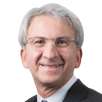
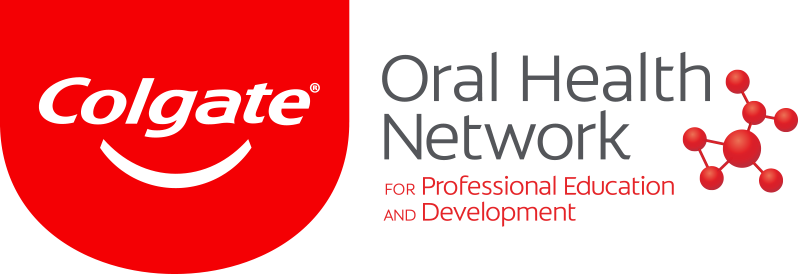
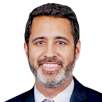
:sharpen(level=0):output(format=png)/up/dt/2024/04/VOCO_Logo_Claim_GB_blau_rgb_gros.png)
:sharpen(level=0):output(format=png)/up/dt/2014/02/Planmeca.png)
:sharpen(level=0):output(format=png)/up/dt/2022/05/osstem_logo.png)
:sharpen(level=0):output(format=png)/up/dt/2015/09/Curaden.png)
:sharpen(level=0):output(format=png)/up/dt/2011/11/ITI-LOGO.png)
:sharpen(level=0):output(format=jpeg)/up/dt/2010/02/logo-3DISC-et-baseline-fond-blanc.jpg)
:sharpen(level=0):output(format=jpeg)/up/dt/2020/04/Backstage-with-the-ITI-Curriculum-An-interview-with-Dr-Charlotte-Stilwell.jpg)
:sharpen(level=0):output(format=png)/up/dt/2011/11/ITI-LOGO.png)
:sharpen(level=0):output(format=jpeg)/up/dt/2022/02/shutterstock_626504315-300x300.jpg)
:sharpen(level=0):output(format=jpeg)/up/dt/2022/11/shutterstock_1916409842.jpg)
:sharpen(level=0):output(format=jpeg)/up/dt/2021/09/Straumann-SmileAward.jpg)
:sharpen(level=0):output(format=jpeg)/up/dt/2020/04/Dental-implant-education-at-your-own-pace-ITI-offers-flexible-online-courses.jpg)
:sharpen(level=0):output(format=jpeg)/up/dt/2020/03/ITI-World-Symposium-deferred-to-next-year.jpg)
:sharpen(level=0):output(format=jpeg)/up/dt/2022/12/International-Team-for-Implantology-welcomes-its-20000th-member.jpg)

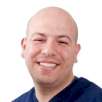
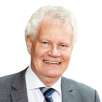
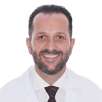

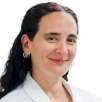


:sharpen(level=0):output(format=jpeg)/wp-content/themes/dt/images/3dprinting-banner.jpg)
:sharpen(level=0):output(format=jpeg)/wp-content/themes/dt/images/aligners-banner.jpg)
:sharpen(level=0):output(format=jpeg)/wp-content/themes/dt/images/covid-banner.jpg)
:sharpen(level=0):output(format=jpeg)/wp-content/themes/dt/images/roots-banner-2024.jpg)
To post a reply please login or register